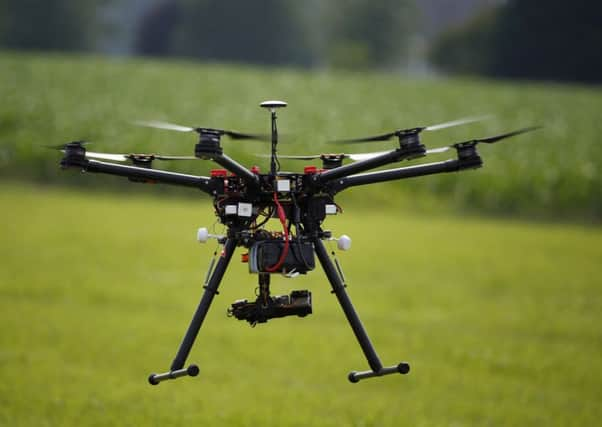Lift-off for drones signals boom years are nearing
This article contains affiliate links. We may earn a small commission on items purchased through this article, but that does not affect our editorial judgement.


The introduction of this technology will, according to the world-wide report compiled by research specialists, IDTechEx, transform the business of agriculture by enabling ultra-precision farming to develop. It predicts a massive change in the way farming is carried out; how it will dramatically alter the use of agrochemicals and bring major changes to how agricultural machinery is designed.
One of the boom growth areas of technology, the report states, will come in the use of drones. Although unmanned remote-controlled helicopters have been spraying rice fields in Japan since the early 1990s, their development in agriculture has been hampered by regulation and it is only now that barriers to the use of drones are being removed, does the report predict “boom years” ahead. The main benefits from using drones will come in the collection of data which can then be used in conjunction with precision farming.
Advertisement
Hide AdAdvertisement
Hide AdIt is estimated that just under one third of a million tractors worldwide are now guided by GPS and the report believes this figure will double within the coming decade. A lack of trust by farmers in using this technology along with high installation costs may have delayed the introduction of tractor guidance and autosteer technologies. But the report believes this will change and the sales of unmanned tractors will become mainstream in the next ten years.
Still in the arable farming sector, vision-enabled robotic implements will help reduce labour bills and also help target the use of agrichemicals. These new generation implements follow the crop rows, identifying the weeds, and then either with mechanical hoeing or targeted spraying removing them. Already, the report states, numerous companies and groups have developed and deployed a variety of weeding robots. Whilst most products are in prototype or semi-commercial trial phase, the first notable sales have also taken place aimed at small multi-crop vegetable farmers.
One area which may have been seen as almost being immune to mechanisation and technology is picking soft fruit. The report admits that progress in this sector has been hampered by the stringent technical requirements together with the lack of CAD models and the fragmented nature of the market thus putting off investment.
“This is however beginning to change, albeit slowly. A limited number of fresh strawberry harvesters are already being commercially trialled, whilst fresh apple and citrus harvesters have also reached the level of late stage prototyping. Market adoption will start from 2021 onwards.”
Dairy farmers have already been quick to adopt robotic milking parlours, but the authors believe there will be a four-fold increase in dairy technology by 2026.